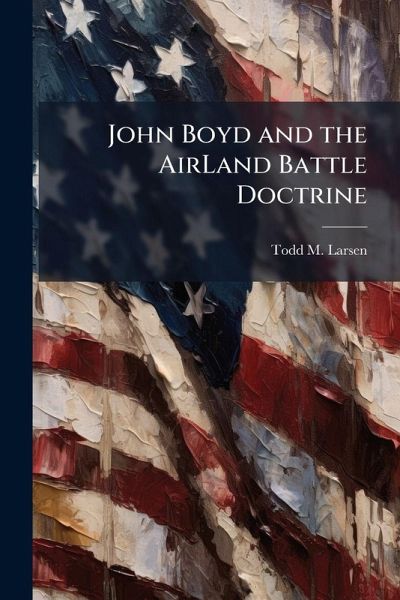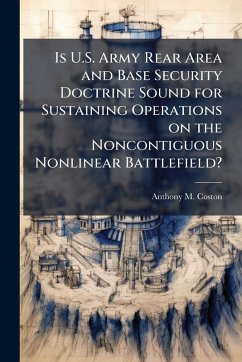
John Boyd and the AirLand Battle Doctrine

PAYBACK Punkte
8 °P sammeln!
The U.S. Army underwent significant doctrinal changes in the years following the Vietnam War. The 1976 edition of Field Manual (FM) 100-5, championed by General William DePuy, attempted to guide the Army's actions necessary to defeat the Soviet Union on a European battlefield by utilizing an active defense. This concept generated vigorous debates internal and external to the Army that ultimately led to the 1982 and 1986 editions of FM 100-5, commonly referred to as the AirLand Battle Doctrine. Since that time, numerous authors have attempted to link John Boyd directly to the doctrine's creatio...
The U.S. Army underwent significant doctrinal changes in the years following the Vietnam War. The 1976 edition of Field Manual (FM) 100-5, championed by General William DePuy, attempted to guide the Army's actions necessary to defeat the Soviet Union on a European battlefield by utilizing an active defense. This concept generated vigorous debates internal and external to the Army that ultimately led to the 1982 and 1986 editions of FM 100-5, commonly referred to as the AirLand Battle Doctrine. Since that time, numerous authors have attempted to link John Boyd directly to the doctrine's creation, with the most damning claims being that the Army outright plagiarized Boyd's work. However, while there is much writing addressing Boyd and the AirLand Battle Doctrine individually, the current literature does not provide empirically conclusive evidence of this linkage. This research has concluded that there was not a direct correlation between John Boyd's concepts and the AirLand Battle Doctrine; however, similarities between Boyd's work and the doctrine were due to the larger reform movement within the Department of Defense (DoD) preceding and throughout the doctrine's development. In order to arrive at this conclusion, this monograph discusses Boyd and the reformers; the doctrine and its authors; and lastly the linkages between the two. The 1976 version of FM 100-5 generated such critical debate within and external to the U.S. Army that the service began revising the manual almost immediately under the direction of TRADOC Commander, General Donn Starry. Starry assembled a team, led by then Lieutenant Colonels Huba Wass de Czege and L.D. Holder, whose efforts eventually led to the publication of the 1982 version of FM 100-5, more commonly known as the AirLand Battle Doctrine. Simultaneous to the FM 100-5 debate and subsequent revision was an effort occurring within the DoD known as the Military Reform Movement. The group's goal was to change the DoD's focus on what they d This work has been selected by scholars as being culturally important, and is part of the knowledge base of civilization as we know it. This work was reproduced from the original artifact, and remains as true to the original work as possible. Therefore, you will see the original copyright references, library stamps (as most of these works have been housed in our most important libraries around the world), and other notations in the work. This work is in the public domain in the United States of America, and possibly other nations. Within the United States, you may freely copy and distribute this work, as no entity (individual or corporate) has a copyright on the body of the work. As a reproduction of a historical artifact, this work may contain missing or blurred pages, poor pictures, errant marks, etc. Scholars believe, and we concur, that this work is important enough to be preserved, reproduced, and made generally available to the public. We appreciate your support of the preservation process, and thank you for being an important part of keeping this knowledge alive and relevant.












